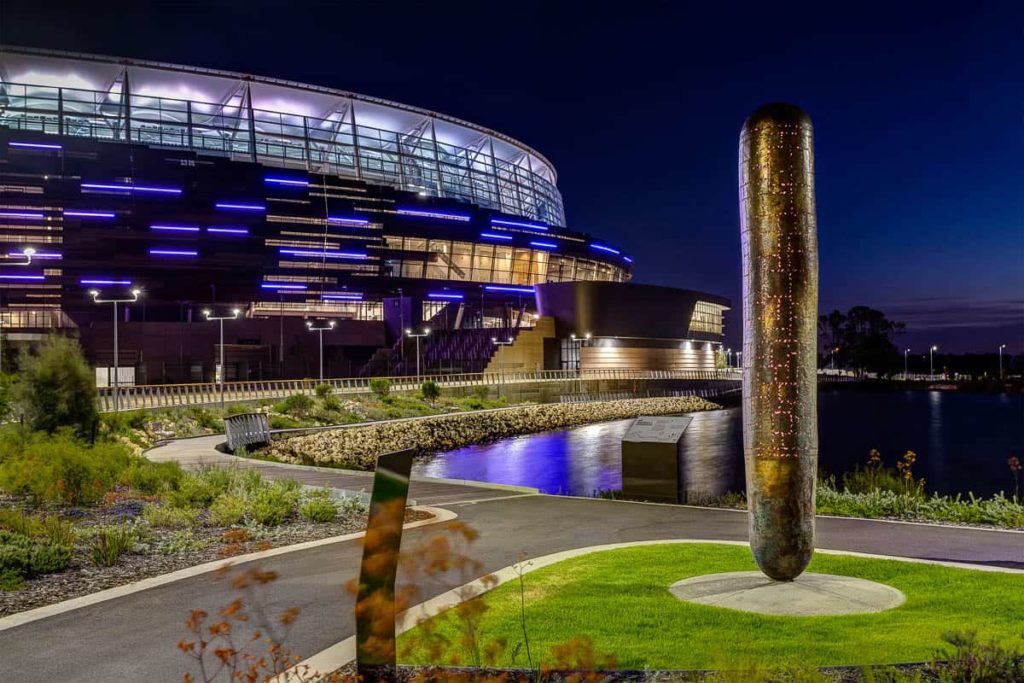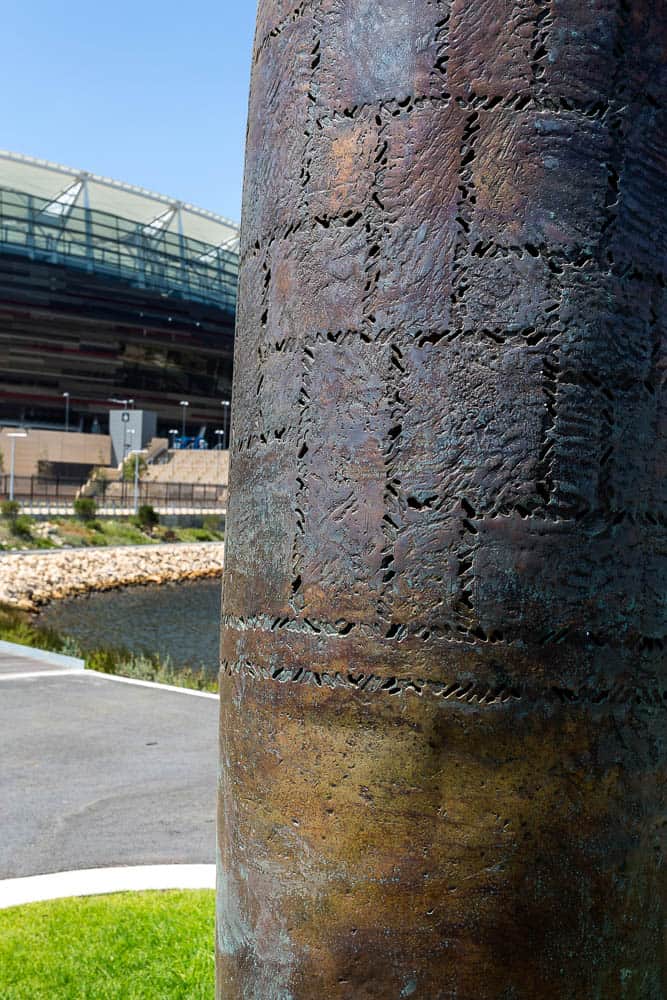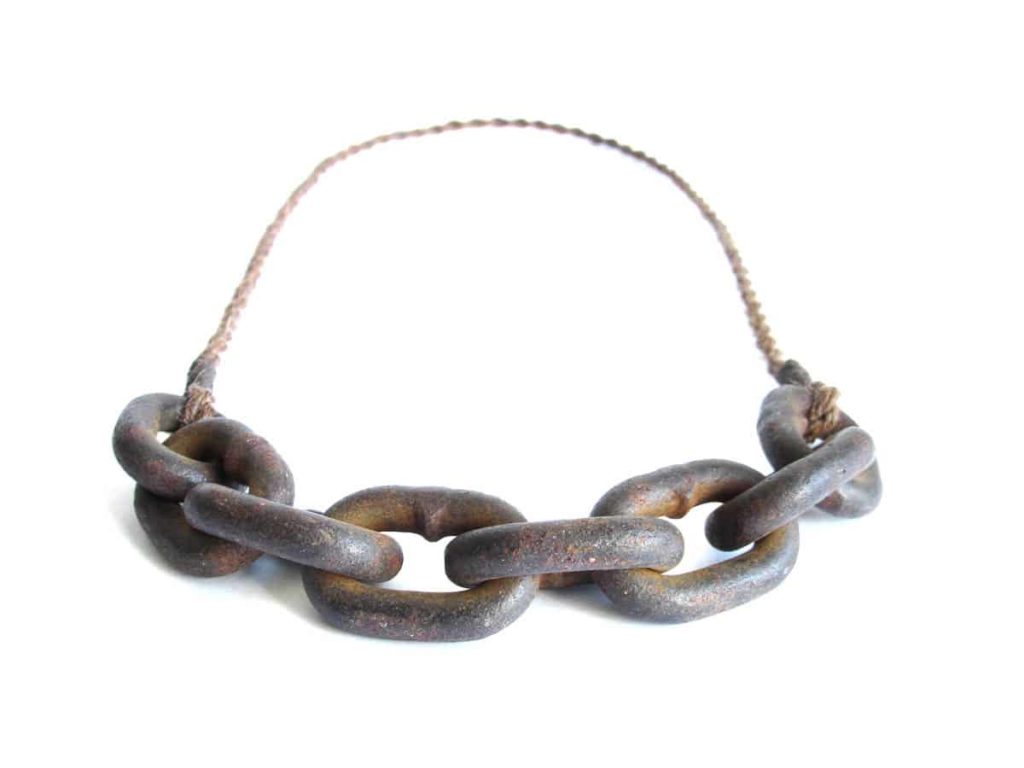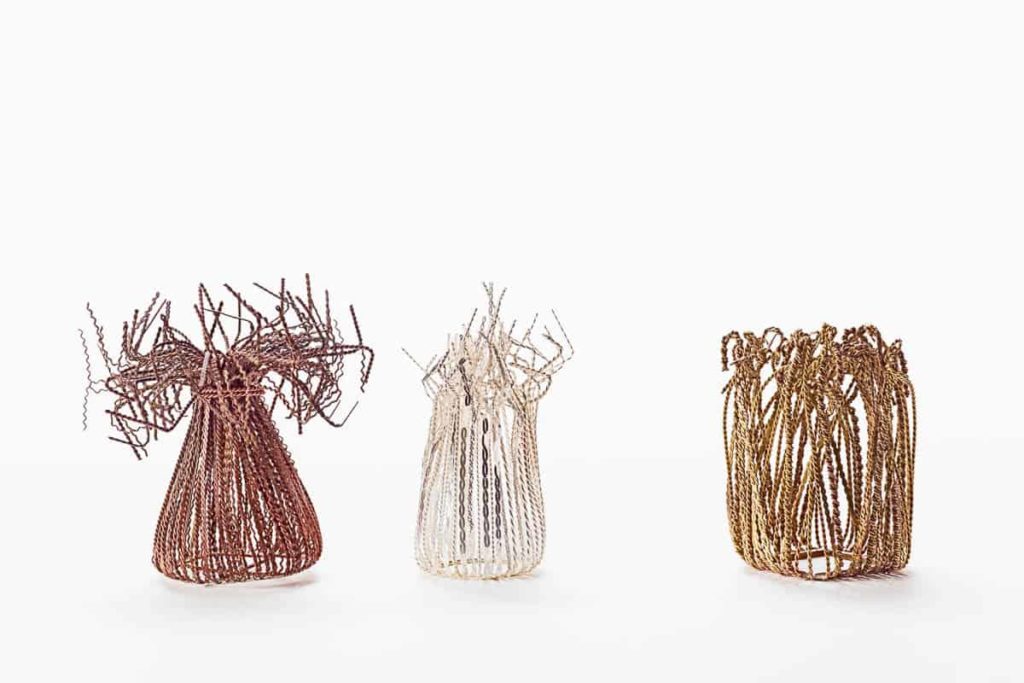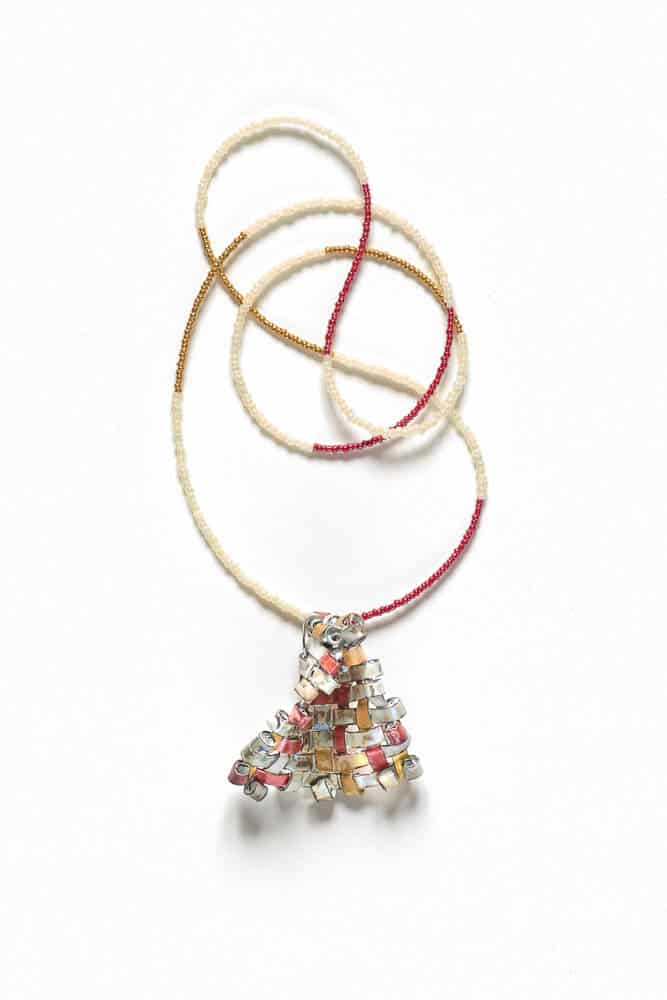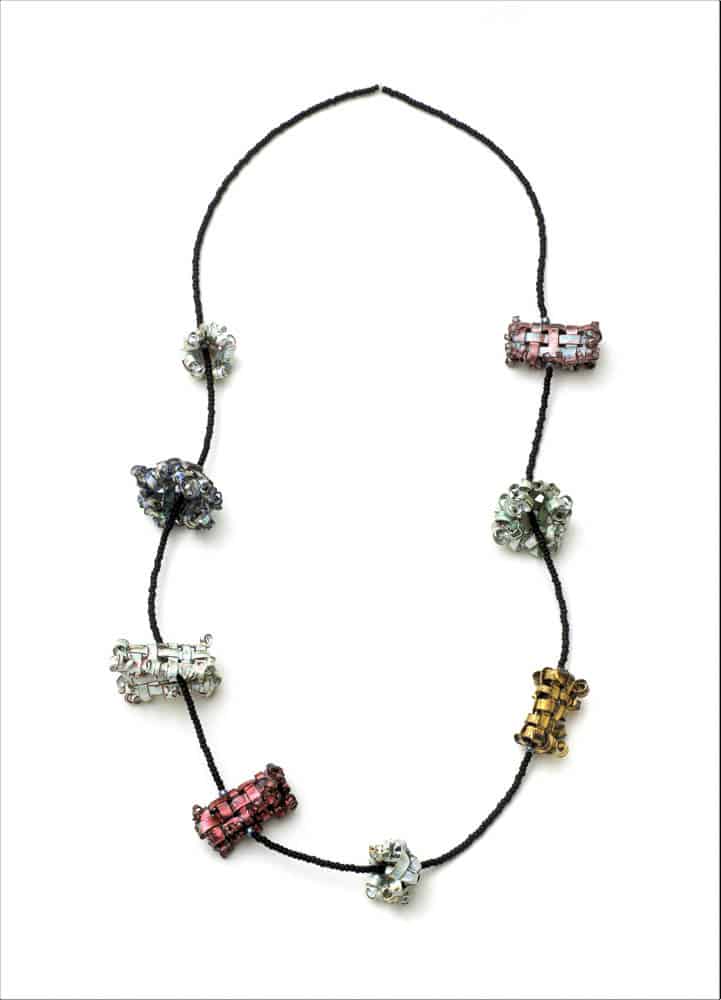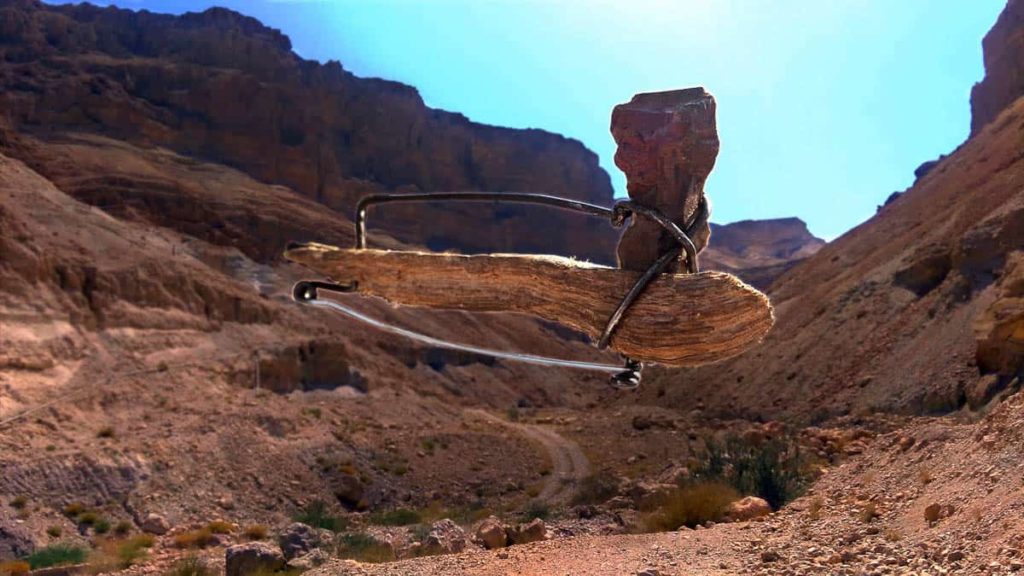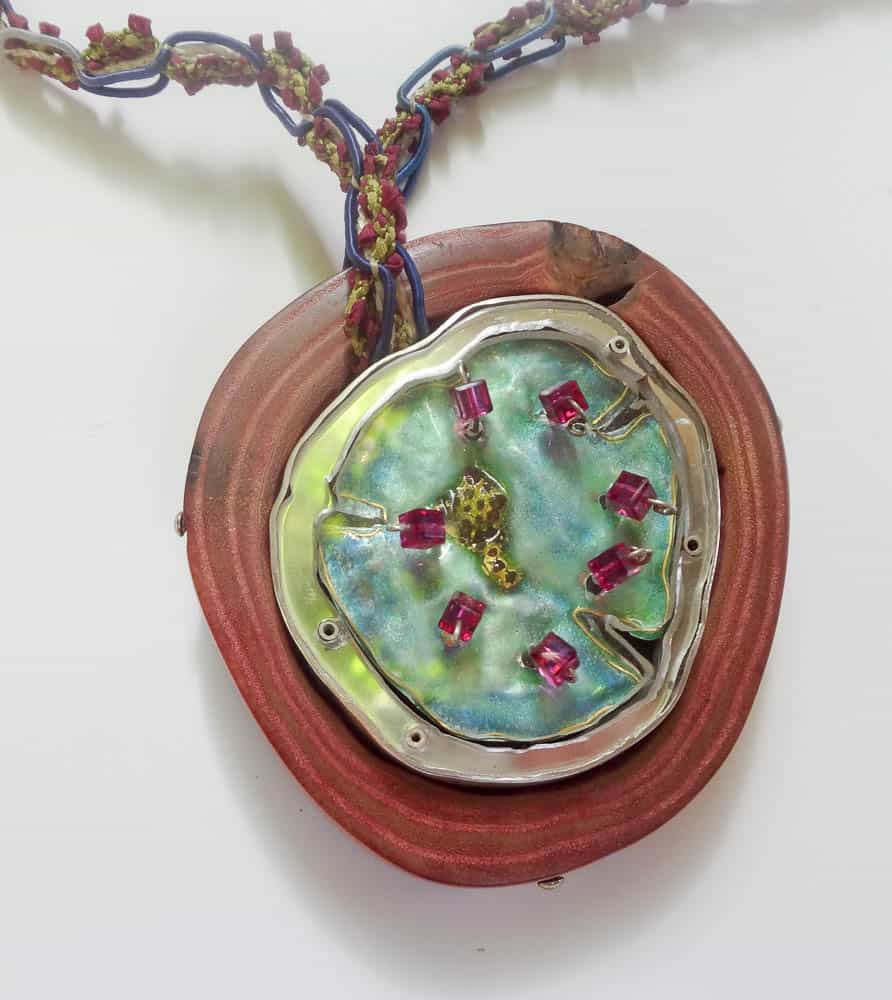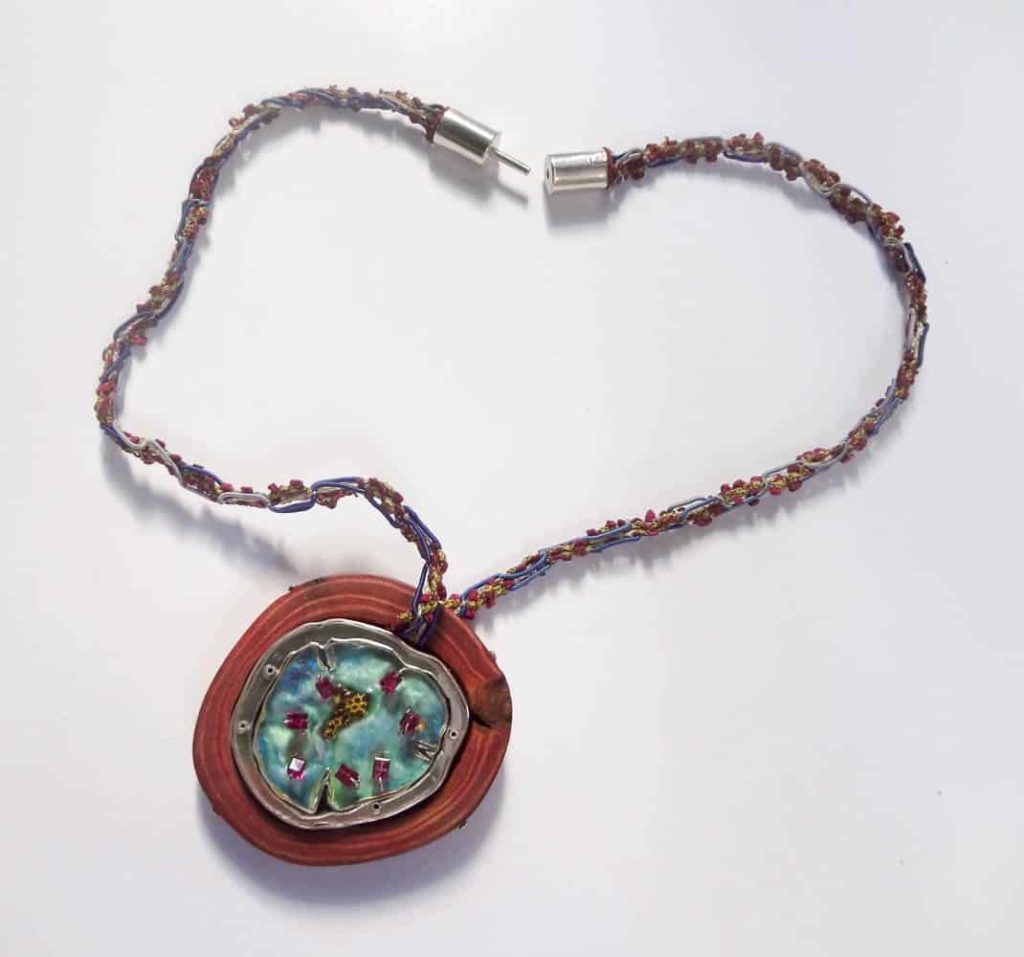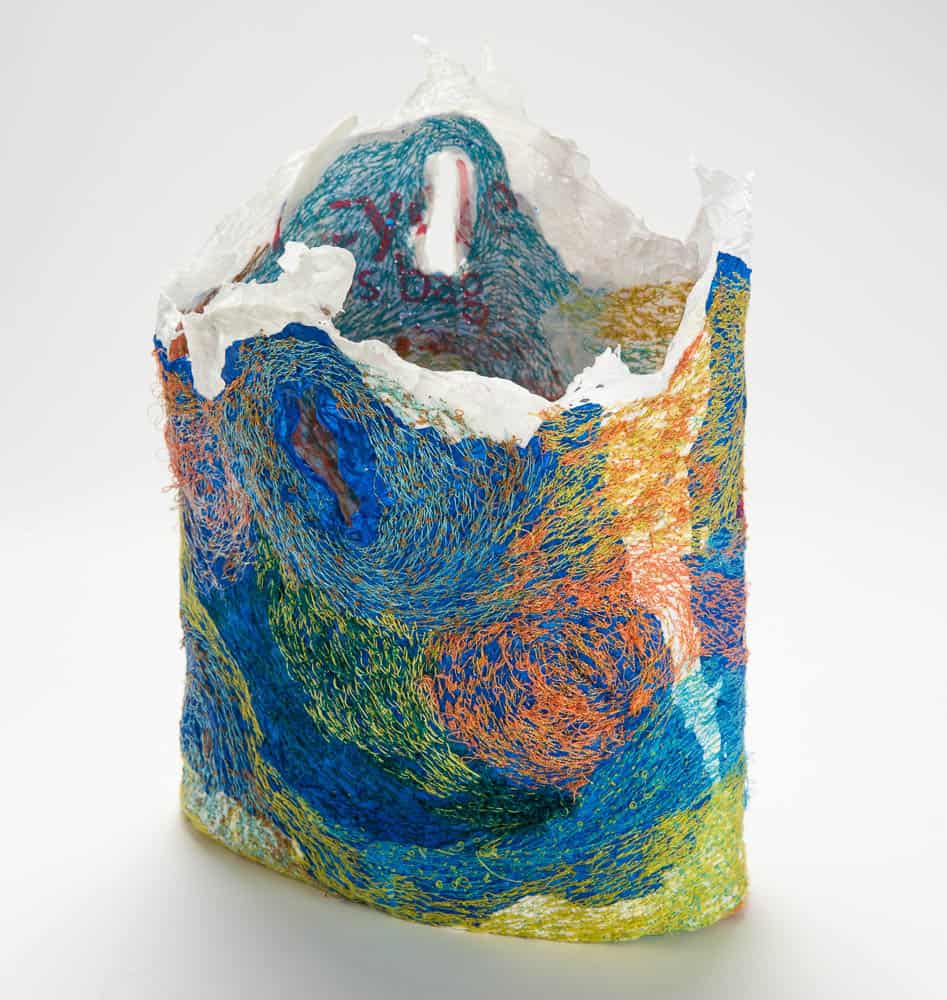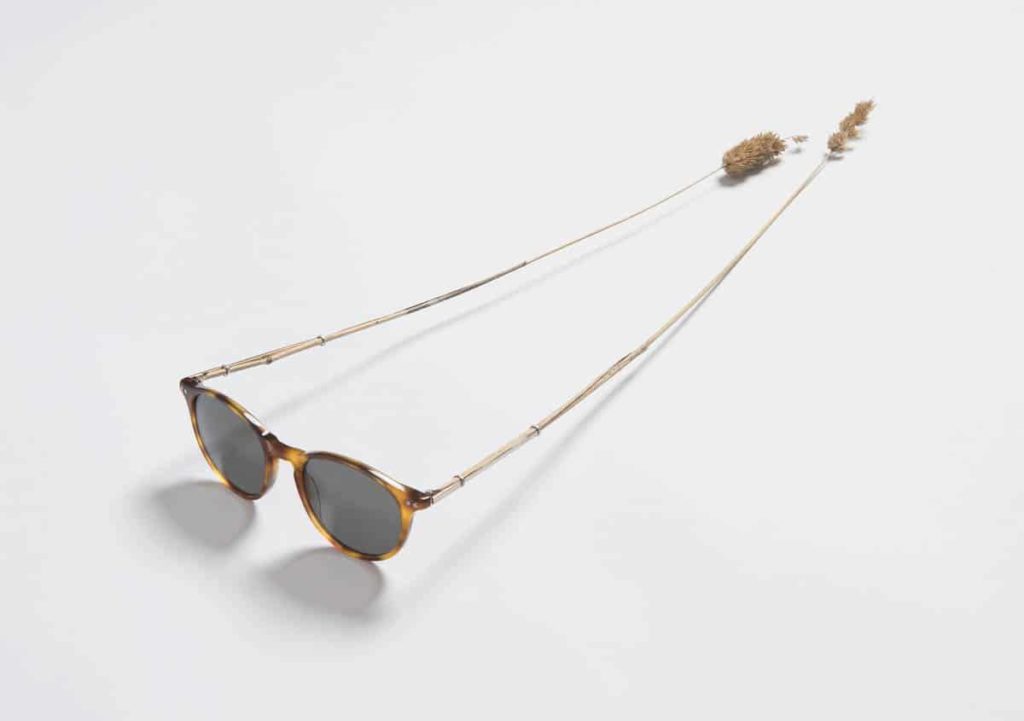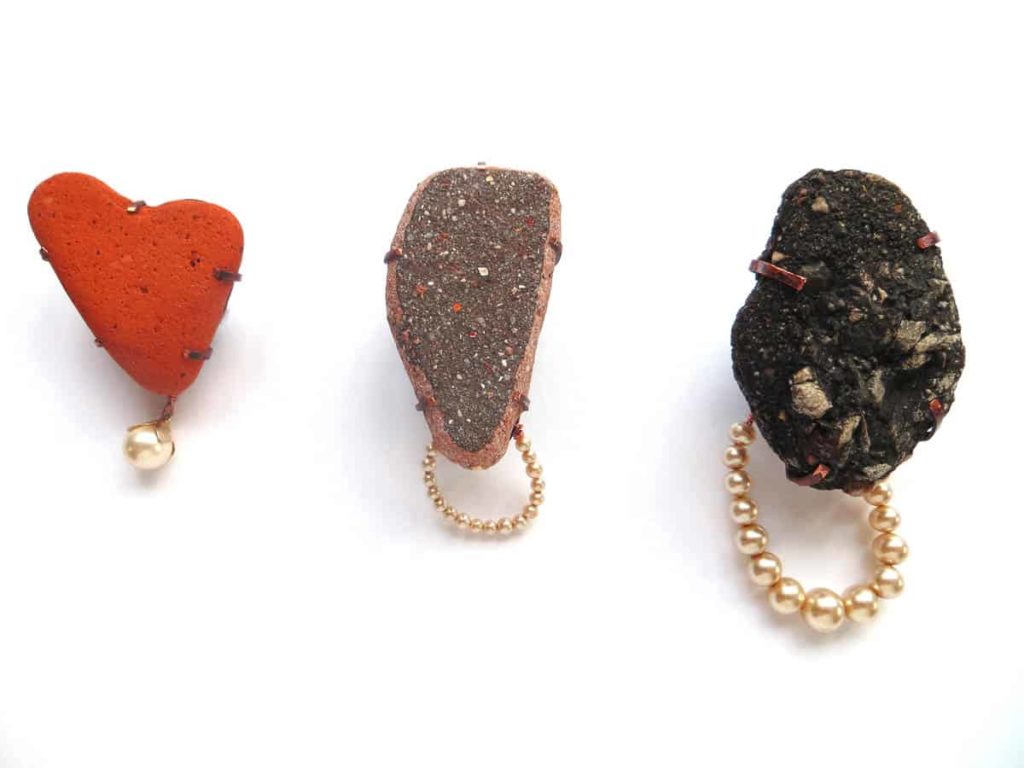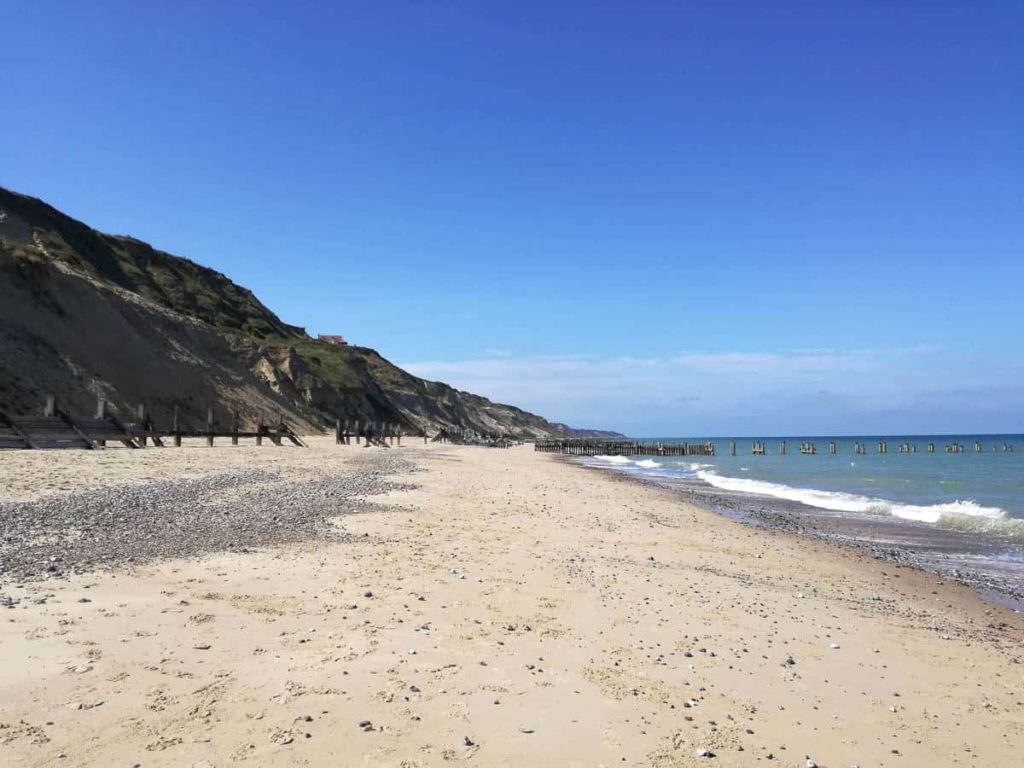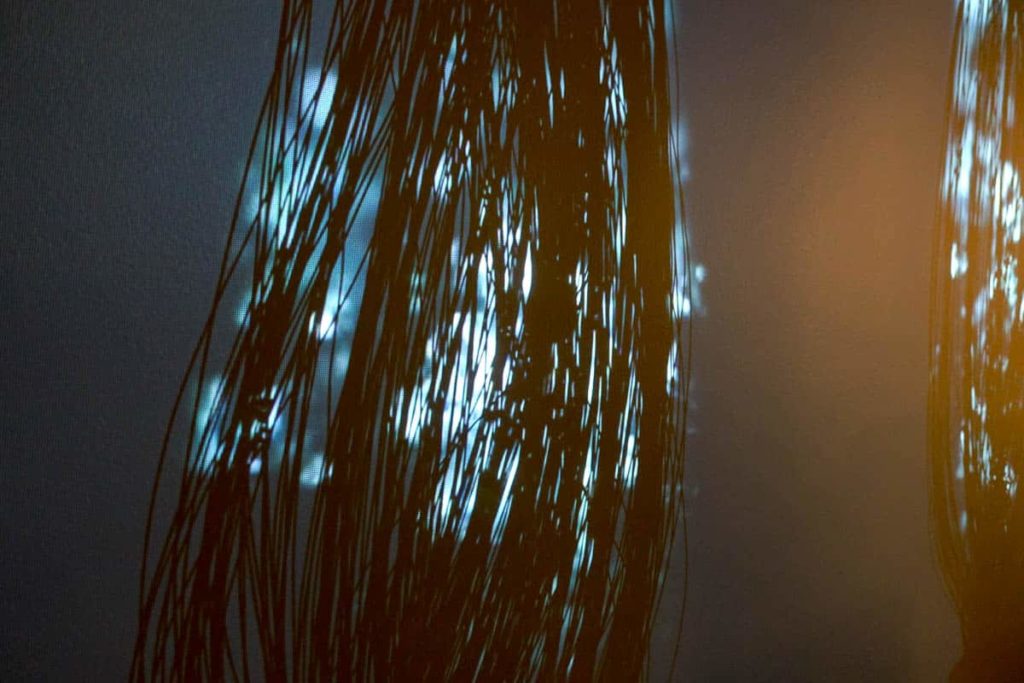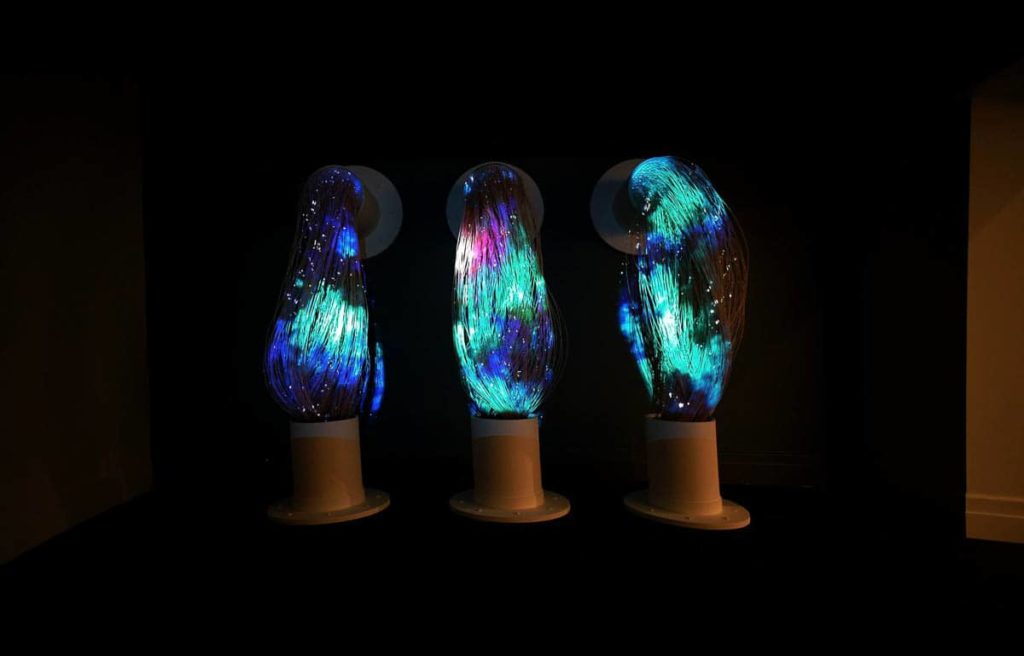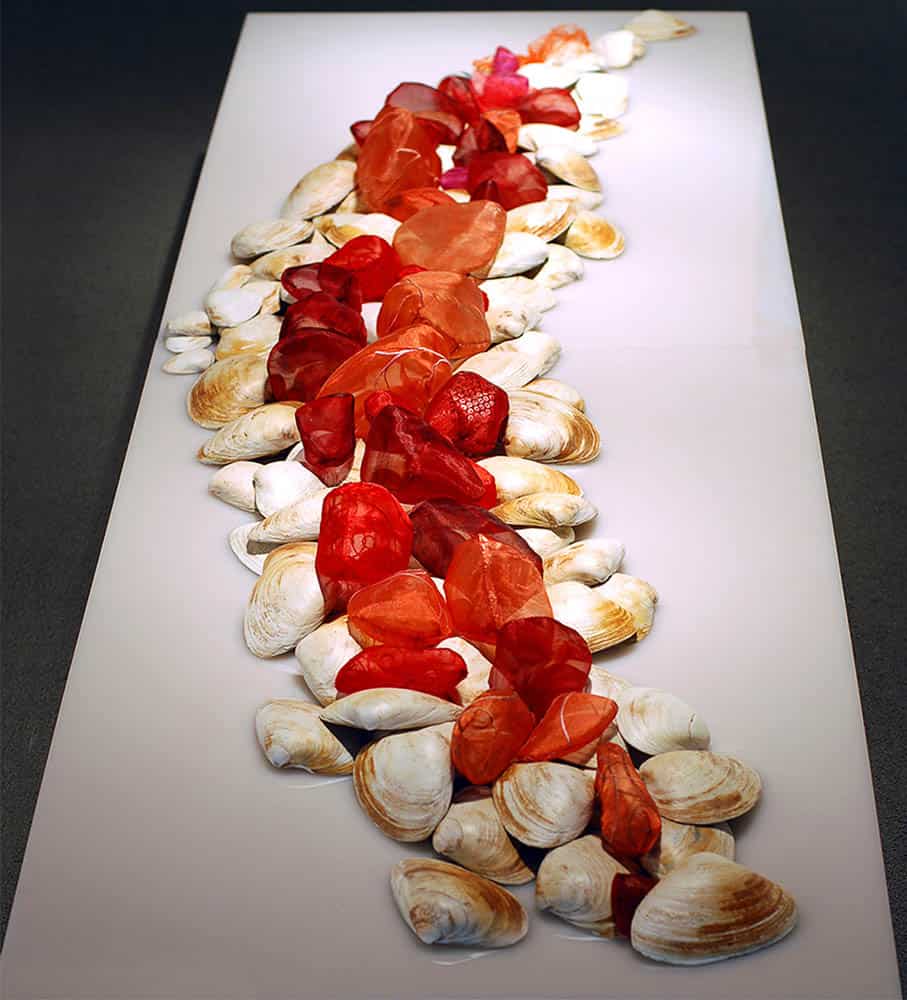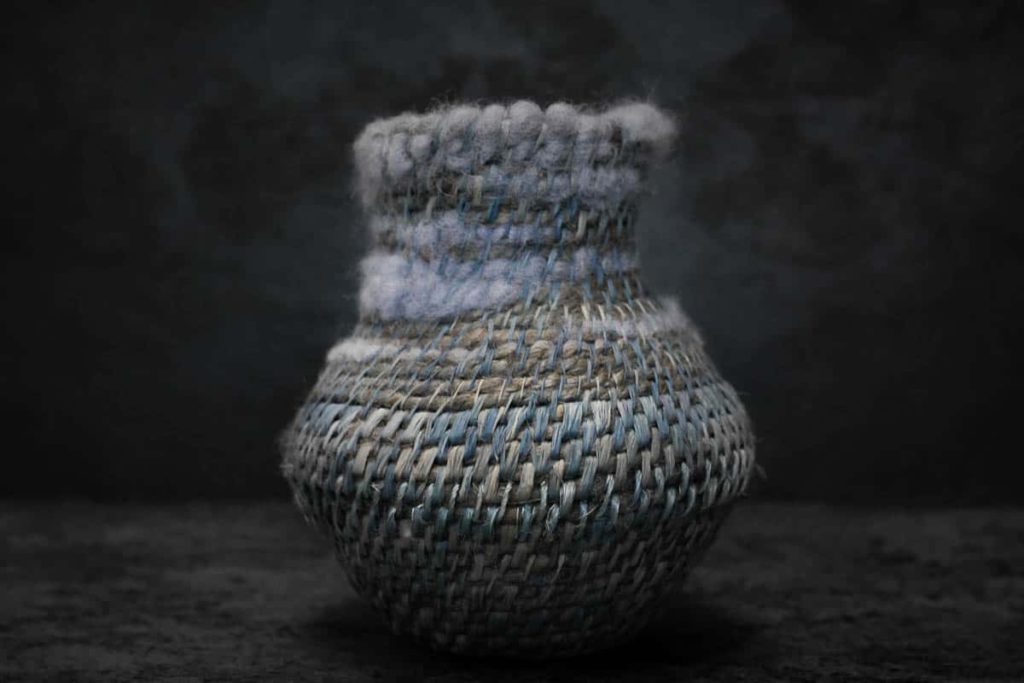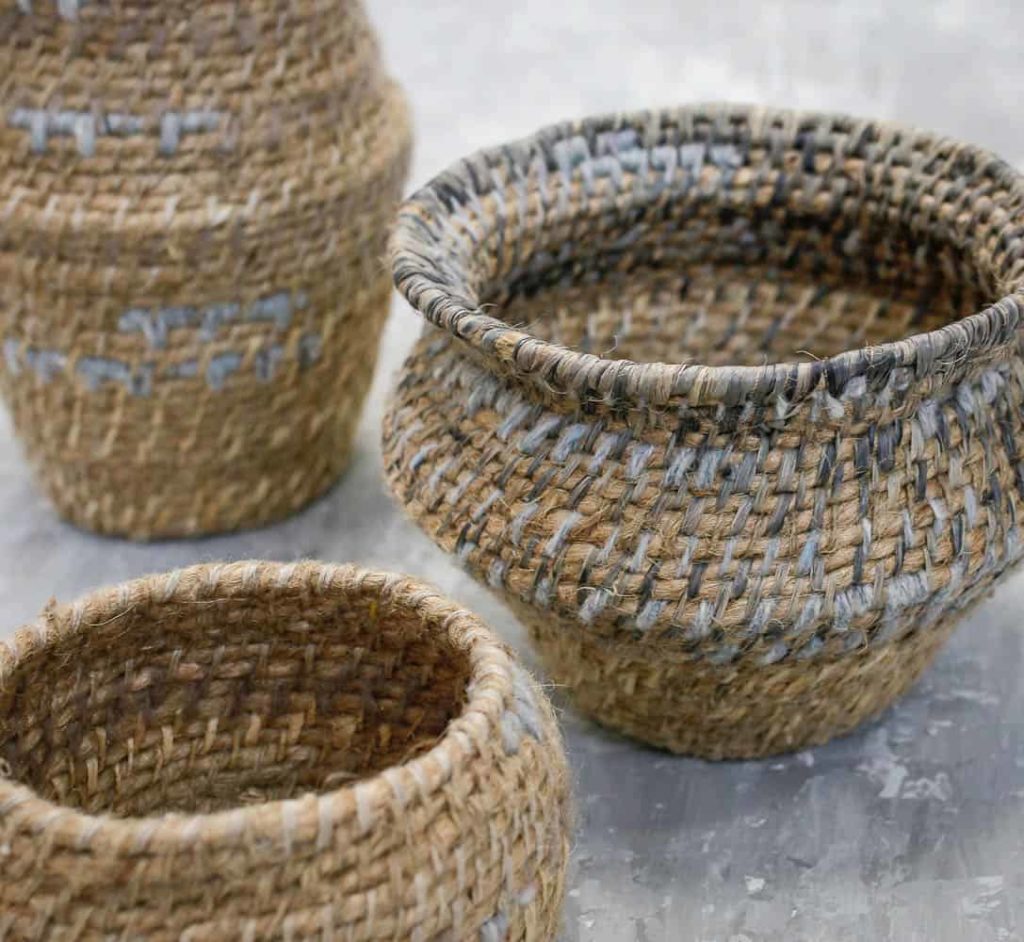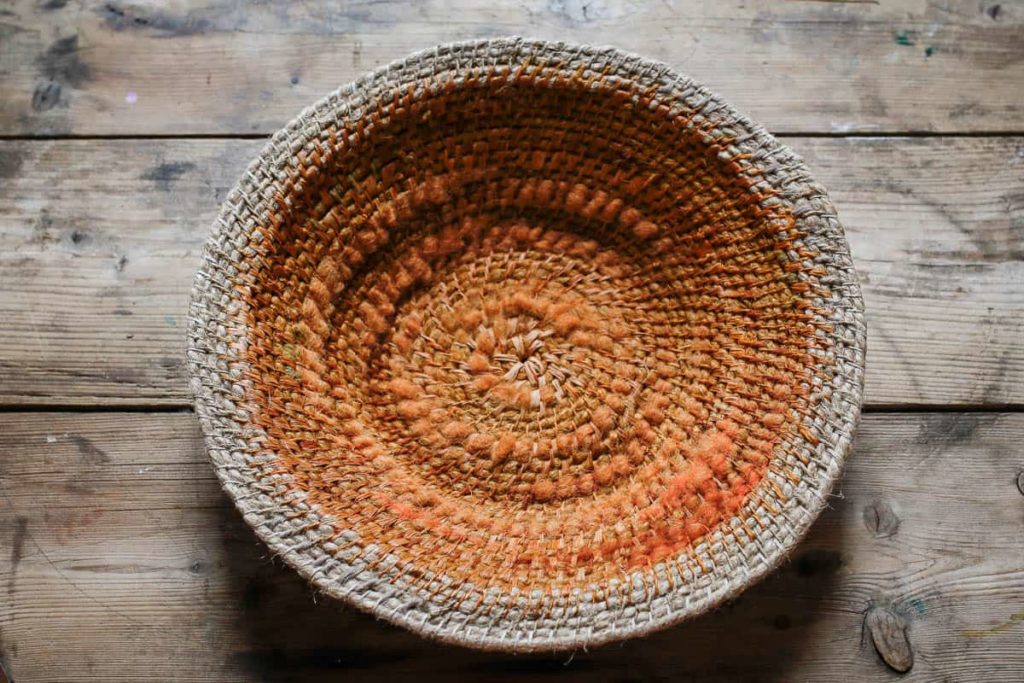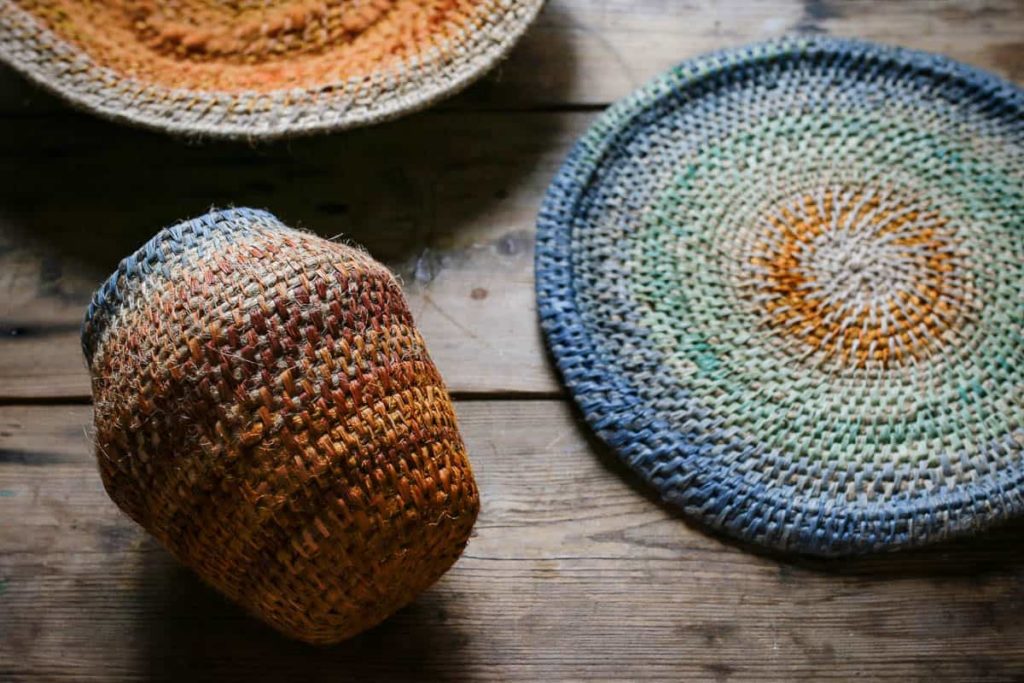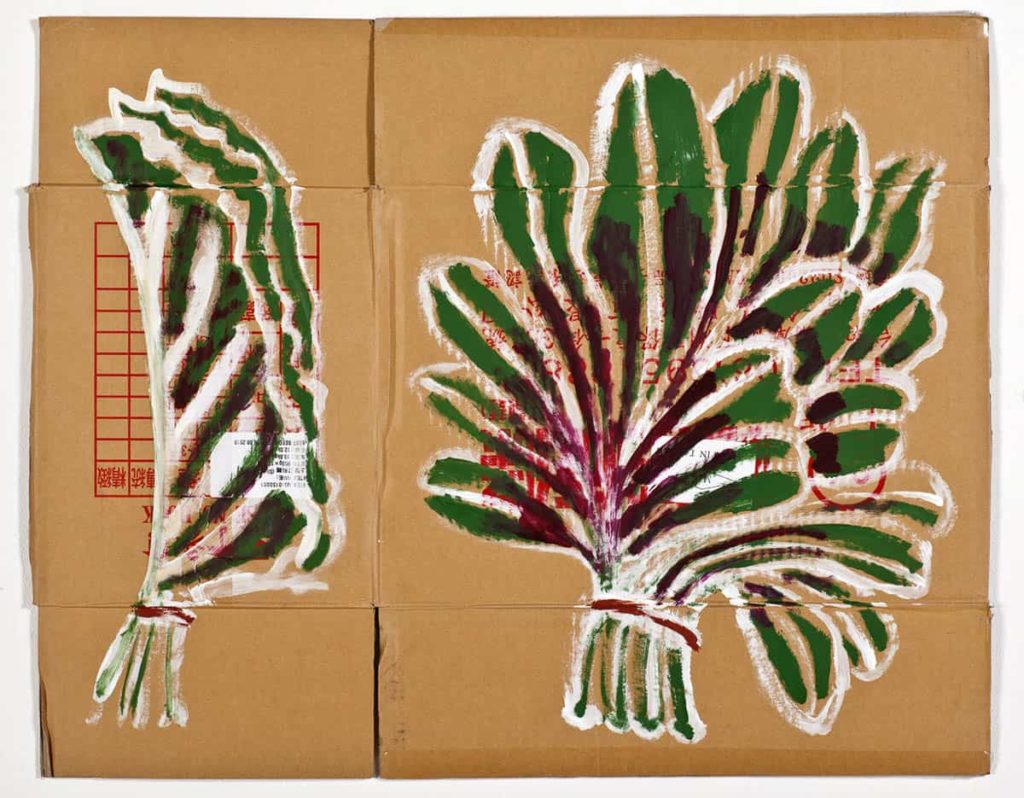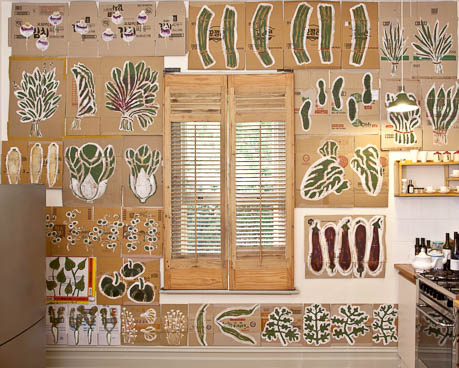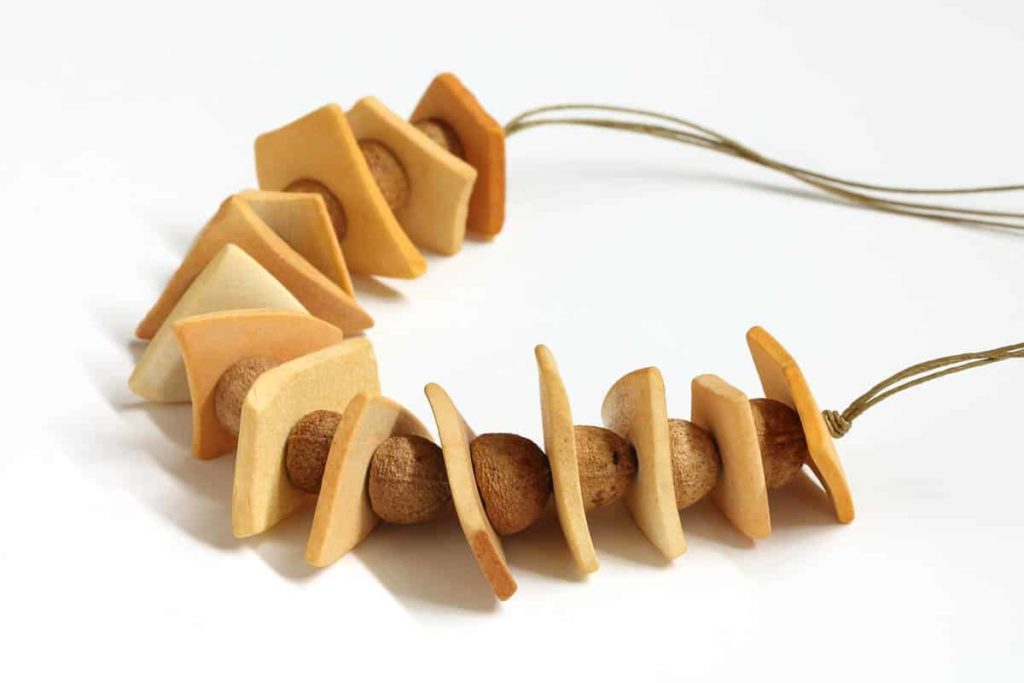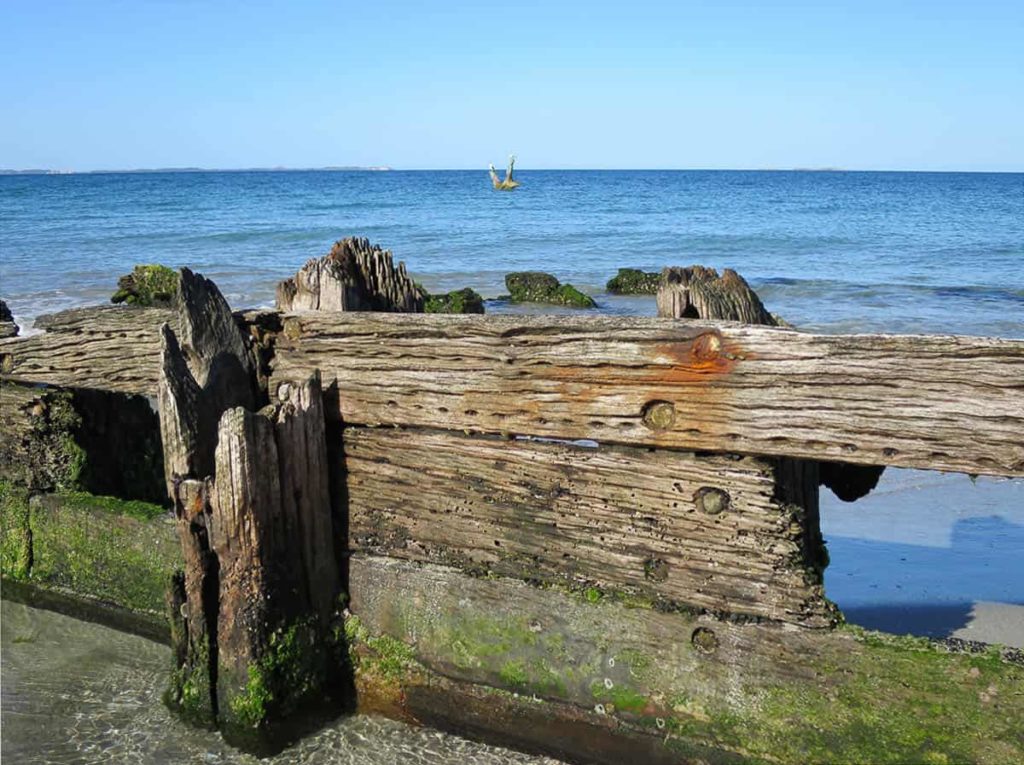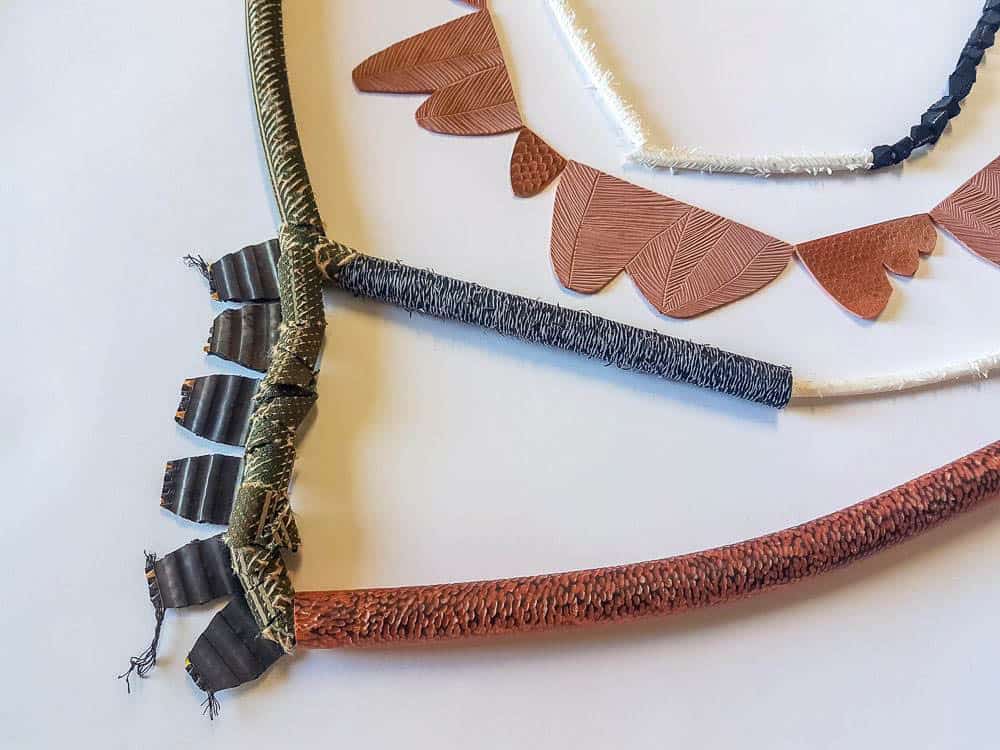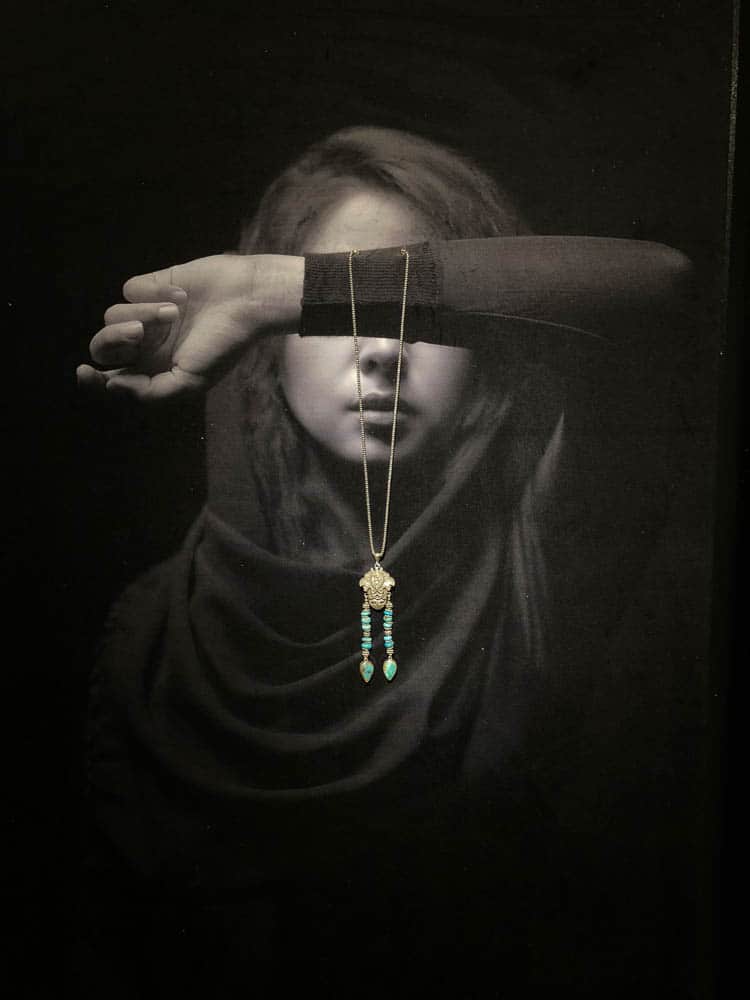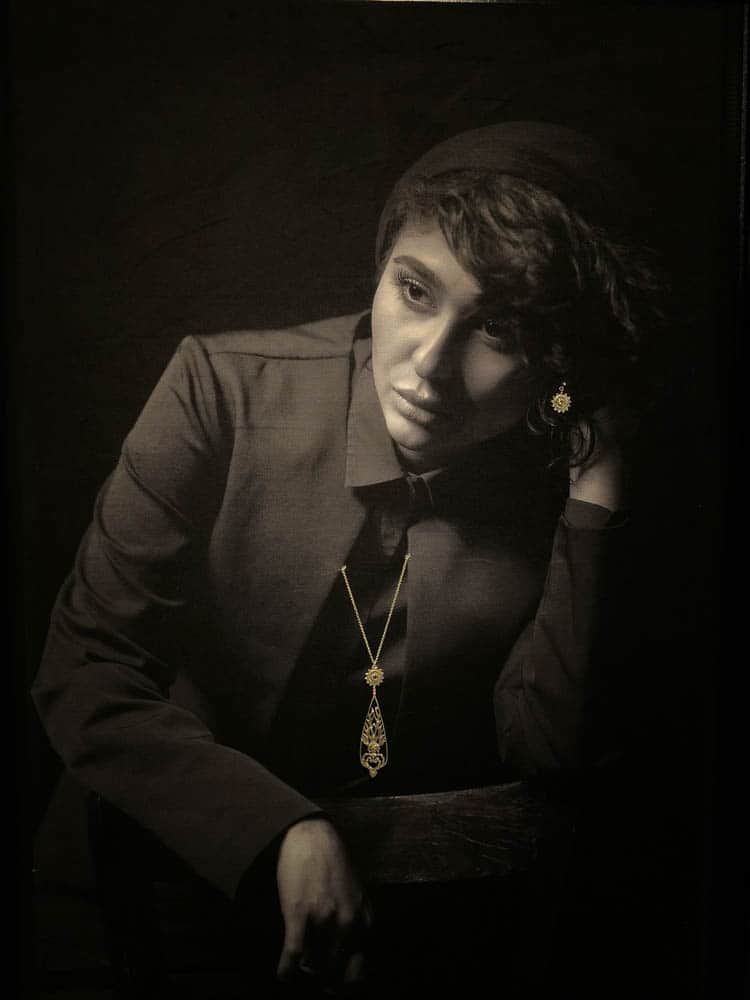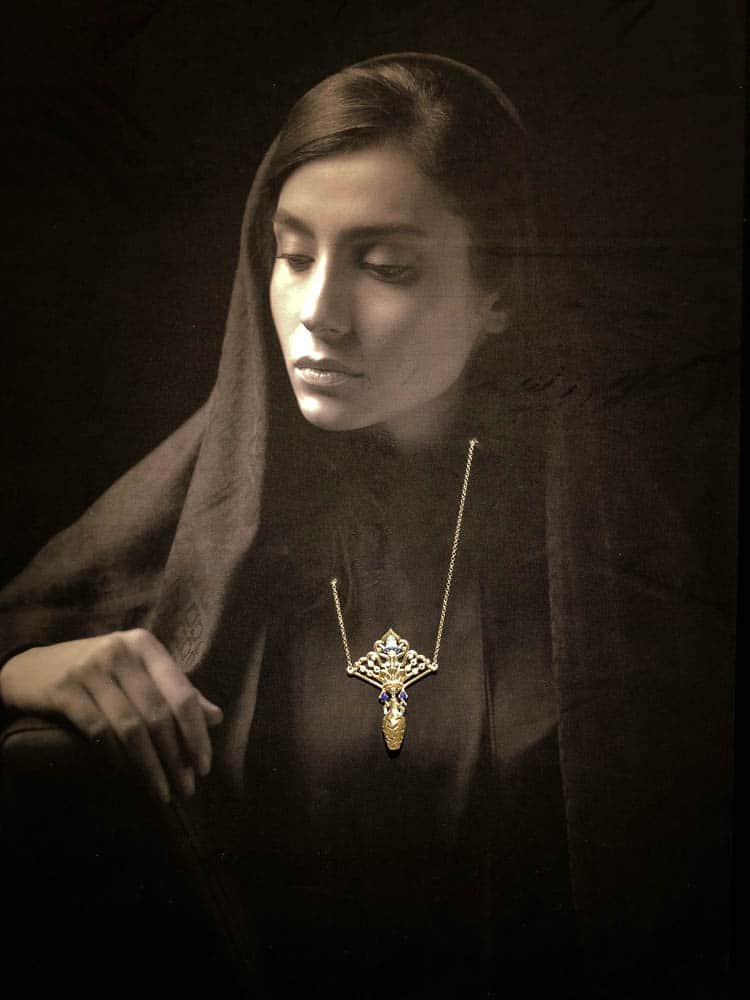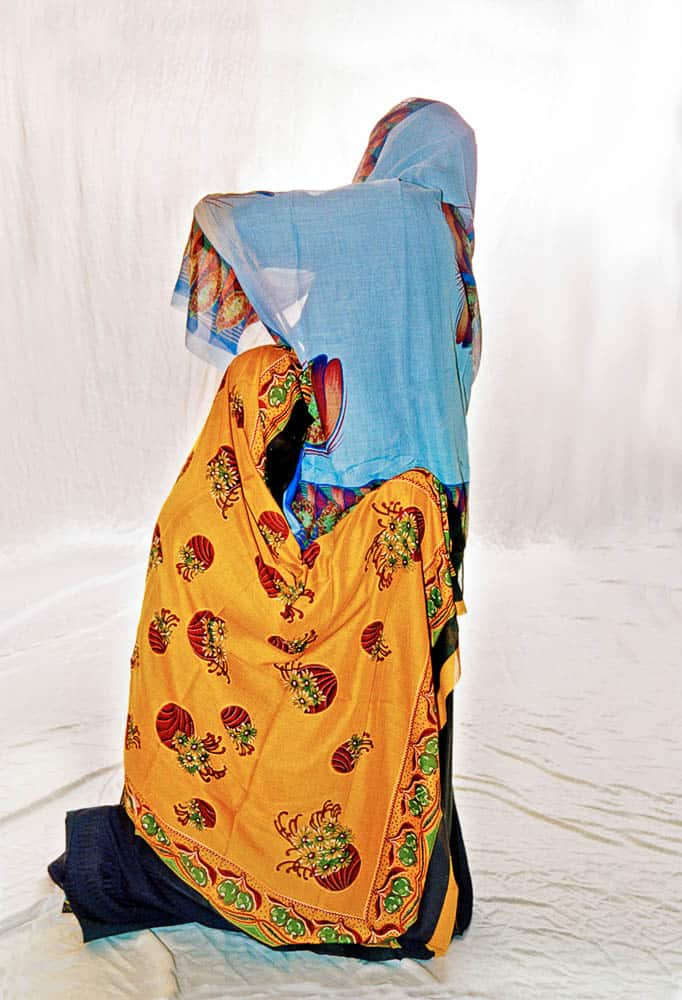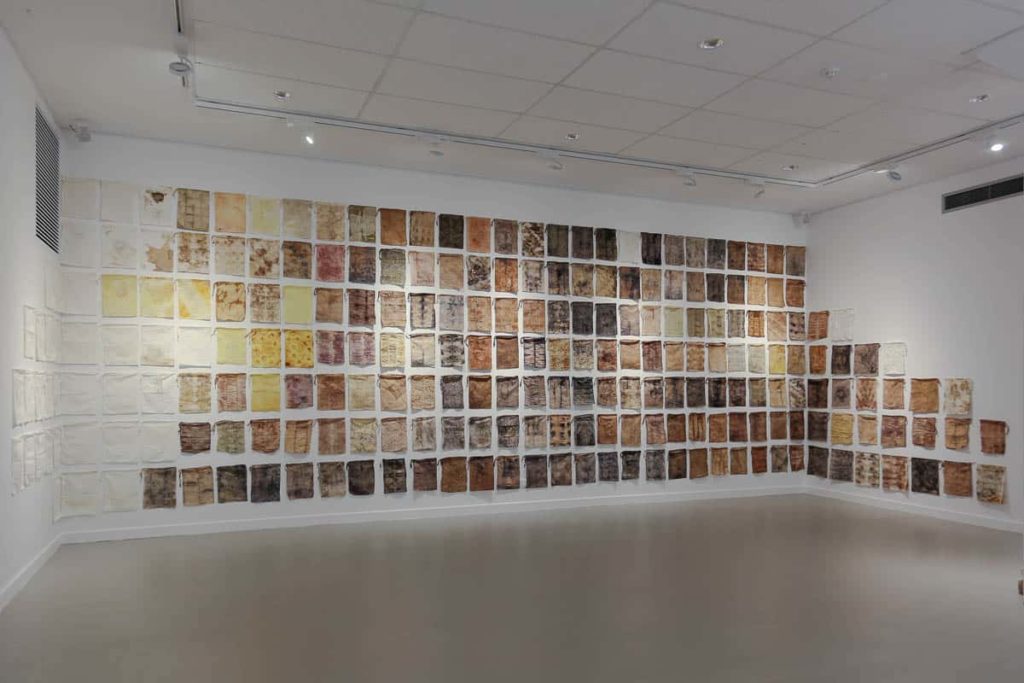“See you not that the ships sail through the sea by Allah’s Grace? That He may show you of His Signs? Verily, in this are signs for every patient, grateful (person)” – verse 31 of the 31st or Surah Luqman of the Holy Quran
The Indian Ocean has been a region where cultures meet, including the great trading civilisations of Malay, India, Oman, China, Portugal, Netherlands, France and Britain. The shores across the Indian Ocean are strewn with objects from foreign cultures. This online exhibition features works made by artists that are inspired by their discoveries.
Fakhriya Al-Yahyai | Fatemah Barg | Sandra Black | Siân Boucherd | Jacqueline Bradley | Kate Campbell-Pope | Pixels + Fibre | Karin Findeis | Graham Hay | Blandine Halle | Pennie Jiagello | Ba An Le | Saberah Malik | Lieta Marziali | Barry McGuire | Britt Mikkelsen | Annette Nykiel | Helen O’Shea | Beverley Price | Stephanie Radok | Holly Story | April Surgent | Annie Fong Nie Teu | Lynne Tinley | Melinda Young
Barry McGuire
- Waanginy Boorna (Message Sticks), Barry McGuire, Perth Stadium, 2017. Photograph by Bewley Shaylor, courtesy of FORM
- Waanginy Boorna (Message Sticks), Barry McGuire, Perth Stadium, 2017. Photograph by Bewley Shaylor, courtesy of FORM
- Waanginy Boorna (Message Sticks), Barry McGuire, Perth Stadium, 2017. Photograph by Bewley Shaylor, courtesy of FORM
The Waanginy Boorna (Message Stick) sculptures are an invitation to all nations to be as one, in one ceremony, in one place, at one time.
One day my Dad took me into the shed and he pulled out a ragged object, around thirty centimetres long, wrapped in possum fur. “This is a waanginy boorna (message stick)”, Dad said, “I want you to have it. This is for you to hold until your son comes along and then he will give it to his son and so on through the generations, ngadabinyarra.”
I remember looking at the markings carved into the wood. Dad told me that these symbols contained information that could convey messages between Aboriginal People across vast distances and was an invitation for people to come together for a Waarna (ceremony). As I held the waanginy boorna I could not imagine how many men had held it across time or how often it had brought people together.
Barry McGuire, a Whadjuk, Ballardong, Noongar artist, has cast in bronze his interpretation of the waanginy boorna here as a symbol of eternalising the implements place in this Boodja (Country). Standing over 4 metres high, the sculptures act as an invitation to all nations to come together to celebrate in the Stadium Park. The concrete plinths the Waanginy Boorna (Message Sticks) sit on is reflective of the full moon, used to guide the message stick runner as they travelled through country. Travel along the BHP Boardwalk at the edge of the Bily Lake to see this artwork’s companion. The Waanginy Boorna (Message Stick) artworks welcome visitors at both the northern and the southern entries of the Stadium Park.
Melinda Young
- Melinda Young, Yoke, 2015, Found metal chain, hand spun cord from found wool, waxed linen thread, 45cm length x 2.5cm photo: Melinda Young
- Melinda Young, Choked, 2015, Found metal objects, found wool, 40 x 20 x 1.5cm, photo: Melinda Young
- Melinda Young, Willyama Common, 2015, view of the location where materials for Yoke & Choked Neckpieces were found, photo: Melinda Young
Visualised in Broken Hill, NSW – made in Sydney, Australia
These works were made from materials scavenged from the Willyama Common on the outskirts of Broken Hill. They are part of a larger body of work titled ‘silver city dreams’, completed in response to a residency undertaken at Broken Hill Regional Art Gallery in 2014 and exhibited at the gallery in 2015. The work made as part of this project attempted to represent aspects of the place and its history through the construction of imaginary, wearable (and unwearable) narratives. These works, Yoke & Choked, speak of servitude and constraint; they are part of a series of sketch-like works made with discarded materials found in and around the Silver City.
Instagram – unnaturaljeweller
Annie Fong Nie Teu
- Annie Rong Nie, Reform the traditions
- Annie Rong Nie, Reform the traditions
- Annie Rong Nie, Reform the traditions
- Annie Rong Nie, Reform the traditions
Made in Melbourne, Australia
Making and innovating jewellery is something that I wanted to do since I was a child. Since I started my school jewellery production career, many people have been asking why I have this idea. Since childhood, I have been interested in small accessories and exquisite things. Thus, I want to do something different from others, only belongs to my own. Then I will transform those little things to different as what it is and slowly become interested in the industry. My learning career has been abroad, Beijing and Australia, so my design ideas are deeply rooted in my origin: Malaysia’s culture and environment.
I am fascinated by Malaysia’s traditional arts and crafts. Traditional Malaysian art is an integral part of human life. It is a central part of the culture in which mankind has a fundamental connection with the natural environment. The artwork is made of natural materials such as bamboo, vine or wood. I was inspired by Malaysia’s unique art production techniques and wanted to try to use the combination of metal and enamel to express Malaysia’s rich culture and colours.
Reform the Traditions is the outcome of combining Malaysia’s multiculturalism with traditional Malaysian handcrafts technologies. I use contemporary jewellery to provide a fresh meaning and reflect back to Malaysian culture. While the arts and crafts feature many techniques, one of the most important is weaving and textiles. The colour technique used in my work represents woven textiles and the art of batik, which embodies flowers, leaves and animals through the use of rich colours. In addition, the idea of using weaving technique is because it is one of the important skills for Malaysia’s craft making. Besides, to shows the multicultural of the country, so I decided to make a group of works to present the cultures and backgrounds of each ethnic. I want people look at it as a series of treasure works which has presented a country’s backgrounds and cultures.
April Surgent
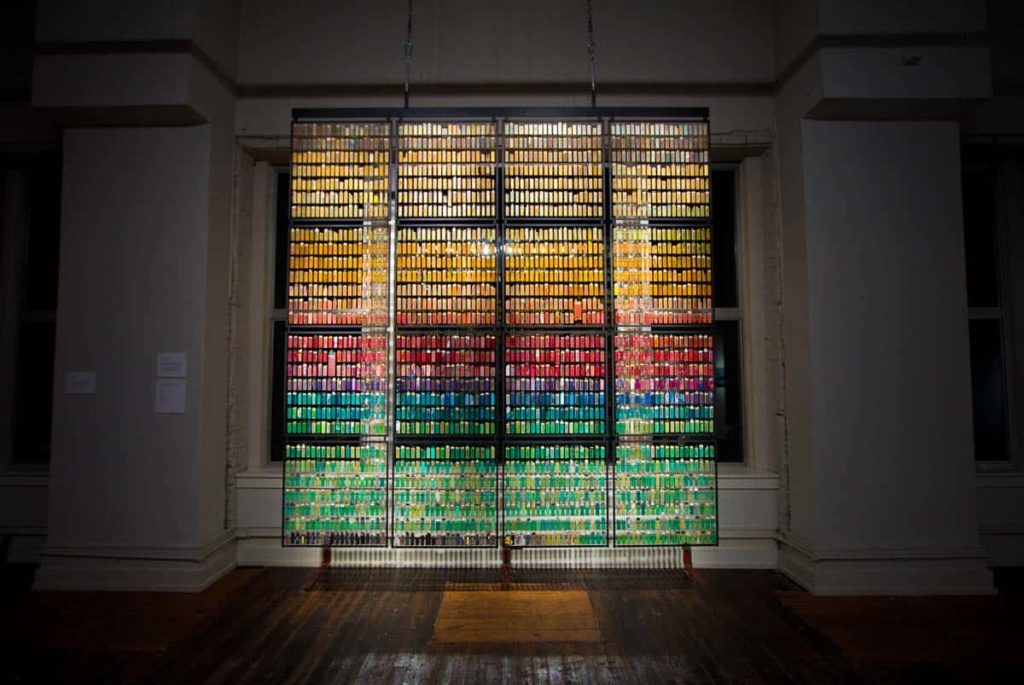
All the little things: Portrait of an ocean 2017 – 2017 – Marine debris (2,240 disposable lighters) and steel frame – 275 x 275 cm – photo: April Surgent
Made in Port Townsend, WA. USA.
These disposable lighters were collected for this project from the Papahānaumokuākea Marine National Monument by Hawaiian Monk Seal Research Program by field biologists during a 4 month period in 2017.
Save for derelict fishing gear, the bulk of marine debris that washes ashore the small, remote islands and islets of the Papahānaumokuākea Marine National Monument are commonly used items, like ‘disposable’ lighters. With the nearest civilization thousands of miles away, we all unwittingly contribute to the problem of marine debris.
Web – www.aprilsurgent.com
Instagram – aprilsurgent
Ba An Le
Made in Israel
In representing truth, it is observed that a common element of truth from individuals and communities is its materiality, namely stone, wood, and metal. Engaging in the three materials is to develop an understanding of materiality, allowing the maker to be connected to a collective memory. Using material as it is given by nature signs human’s response to the environment as an act of manipulation, crafting functional objects and jewels. The language for this piece is the setting of stone to wood with metal.
Instagram – baan_le
Beverley Price
A playful jewel. Enamel piece set in its own vitrine. The wood is pierced on an annual ring from a dried slice of wood from a forest near Munich, Germany; the silver setting comprises the reticulated fine silver basse-taille enamelled with embedded fine gold wire and foil. This is set in a mirror-Perspex frame which is riveted to supporting layers below. The entire unit is set in silver. The clear Perspex above the enamel is protective and kept in place by wires which feed up from a hidden metal base underneath the enamel, and Swarovski crystals. The reverse side is percussive with mobile green glass and Swarovski squares in place under clear Perspex. Mokuba Japanese cord bought in Paris and consistent with the plum-coloured Swarovski crystals, is threaded through the wooden frame. The tubular clasp comprises a positive and negative rod and chenier mechanism. The work turns when worn on a moving human body.
I had all these materials from my travels and had made some beautiful enamel. Enamel needs to be protected. Giving it its own vitrine was a solution.
Helen O’Shea
- Helen O’Shea, Floating Blue Elaboration, 2017, recycled plastic bags, threads, h 27 x w 23 x d 20 cms, photo: Roseanne Lynch
- Helen O’Shea, Floating Blue Elaboration, 2017, recycled plastic bags, threads, h 27 x w 23 x d 20 cms, photo: Roseanne Lynch
In my studio in Cork, Ireland
After finding plastic bags floating in the sea, I want to extract high value form the material calling attention to the loss of potential. Introducing the idea of ‘worth’ question’s our unthinking throwaway responses. Dealing with the physicality of materials; my fingers explore its properties and characteristics while my mind explores its history. From these experiences my work emerges. https://www.facebook.com/helenosheaart/ https://www.instagram.com/helenosheais/
Holly Story

Holly Story, Beeliar Skins, 2015, Junkus kraussii reeds, 10 cm x 30 cm x 20 cm variable, photo: Robert Frith
Made in Fremantle, Western Australia
These works are in response to the disappearance of wetlands on the Swan River coastal plain and the subsequent loss of biodiversity. And in particular to highlight the effect of building the (then) proposed Roe 8 highway extension through a section of the Beeliar wetlands near Perth, W. Australia. I wove these “skins” around a series of natural objects collected by the poet Nandi Chinna for the project and then removed the object. Where do the disappeared go ? Do their forms remain to be re inhabited as the evolutionary story unfolds, or are they lost forever ?
Web – www.hollystory.com
Jacqueline Bradley
- Jacqueline Bradley, Grass Glasses, 2016. Sunglasses, grass from the roadside near Cooma, Australia, aluminium tube (6cm x 14cm x 47cm) Photographer: Brenton McGeachie
- Image of the location by the highway in the Monaro where the grass for this artwork was found. Photographer: Brenton McGeachie
In my studio in Canberra
This piece was made using jewellery-making techniques, as part of a bigger project looking for ways to merge figure and landscape through contemporary sculptural practice. These works will be on display at the Drill Hall Gallery, ACT, from February 22nd until April 8th, 2018. Other works in this series can be seen here.
Web – www.jacquelinebradley.com.au
Instagram – jacquelinebradleyart
Karin Findeis
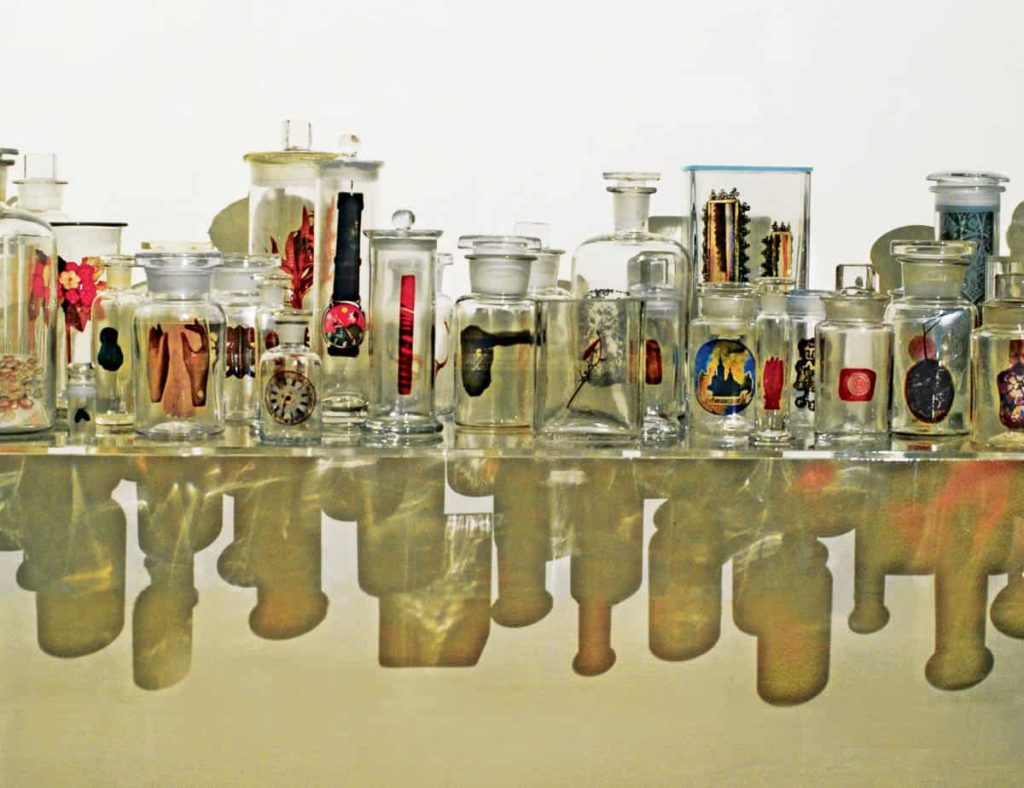
Karin Findeis, Inventorium, 2008, photographs, specimen jars, 120 x 40 x 50 cm, photo: Barry Langrishe
Made in Sydney, Australia
This installation consists of photos of objects I collected from flea markets around the world. They are suspended in specimen jars from 19th century, disconnected from their origins and ordered according to my whim. In collecting, reconfiguring and assembling them I wanted to mimic the explorers of the Enlightenment, but also reflect on my own immigrant heritage where people carry with them objects that hold meaning and value to them.
Web – www.karinfindeis.com
Instagram – kfindeis
Kate Campbell-Pope
Made in Albany, Western Australia
During a Residency on an uninhabited ‘Lighthouse Island’ off Albany, WA, known as Breaksea Island, I discovered the plant ‘Pimelea Clavata’ growing prolifically there, and this led to an intense period of string making and drawings of this plant.
This Pimelea is very closely related to another Pimelea species I knew was used by Aboriginal people for net bag making to collect Bogong moths around Canberra (site of another arts residency I had undertaken about 10 years previously).
Lieta Marziali
- Lieta Marziali, Norfolk Fields: On the Alchemy of Before, Between and Beyond (brooch), 2018, sheep’s wool, shotgun cartridge case, rusty wire, 18ct gold, iron, stainless steel, 8.5 x 7 x 6 cm, photo: Lieta Marziali
- Lieta Marziali, Norfolk Fields…, location shot Stody, Norfolk, UK
- Lieta Marziali, Three Mourning Brooches (Lost, Gone Before, and Beach Road), 2013, beach-combed brick, paving and tarmac fragments, vintage faux pearls, copper, 6 x 4 x 2.2 cm (Lost), 7 x 3.5 x 2.5 cm (Gone Before), 8.5. x 5 x 3.5 cm (Beach Road), photo: Lieta Marziali
- Lieta Marziali, Three Mourning Brooches, location shot Mundesley, Norfolk, UK
- Lieta Marziali, Everything I’ve Ever Loved About You.JPG: Lieta Marziali, Everything I’ve Ever Loved About You, 2013, driftwood, amber, copper, 44 x 4 x 2.5 cm, photo: Lieta Marziali
- Lieta Marziali, Everything I’ve Ever Loved About You, location shot West Runton, Norfolk, UK
Holt, Norfolk, UK
NORFOLK FIELDS: ON THE ALCHEMY OF BEFORE, BETWEEN AND BEYOND “Sheep, shotgun cartridges and fence wire are a staple of the Norfolk countryside. And so are the famous gold treasures of Queen Boudica’s Iceni.
But we are often both perpetrators and victims of casual observation. A find is not just a find, but a frozen moment in time, the snapshot of an experience braiding body, landscape and the acts of walking and foraging. As we take the time to awaken our consciousness to this moment, we begin asking: what is the cycle of life and death, of disappearance and reappearance, of extraction and refinement and then of deposition and discovery of these objects? And what is ours?”
THREE NORFOLK MOURNING BROOCHES “Beaches on the east of Norfolk experience some of the harshest coastal erosion in the UK.
The debris, material leftovers of someone’s sea-view house or a road once echoing with the shrills of holidaying children, evoke at the same time a sense of loss and of wonder. They exorcise the human fear of dispossession, disappearance and destruction and transport what existed before into the carefree realm of memory and story-telling.”
EVERYTHING I’VE EVER LOVED ABOUT YOU “I collected the driftwood and amber (my first and only find on our once-rich North Sea shores) together on my favourite local Norfolk beach after a particularly powerful spring-, storm-, and full-moon tide.
The piece of driftwood, drying in my kitchen for weeks, soon became a familiar object. And yet, every day, I would look through its natural holes and find a new point of view: a new grain of sand which had been released by the closing fabric of the wood, another nuance in its seemingly homogeneous colouration. Every day, this tiny object revealed new facets and new emotions to the eye, hand and soul willing to spend time watching, feeling and listening.
It takes time to explore. It takes time to feel the inner rhythm of what we think is familiar.”
Web – www.lietamarziali.co.uk
Instagram – lietamarziali
Lynne Tinley
- Lynne Tinley, White Gum Valley, 2016, acrylic paint, paper, plant matter, thread, 40 x 62cm, Janine Tinley
- Ken Tinley – Lynne Tinley’s White Gum Valley photo
Made in White Gum Valley, Western Australia
An adventure with nothing in mind, this was made spontaneously by roller monotypes on paper, thread added to the roller for extra texture and the dried leaves painted and strategically collaged; the finished painting reflects the leafy atmosphere of the suburb where I live.
Pixels + Fibre Fiona Gavino & Myrto Angelouli
Western Australia
- Pixels+Fibre, Future Water/ Water Future, 2017, cane, industrial pipes, water, black dye, mapped video projections, sound, dimensions variable, photo: Elliot Lee Welsford – Isolated Photography
- Pixels+Fibre, Future Water/ Water Future, 2017, cane, industrial pipes, water, black dye, mapped video projections, sound, dimensions variable, photo: Elliot Lee Welsford – Isolated Photography
Pixels+Fibre duo Fiona Gavino and Myrto Angelouli continue their experimentation with digital and fibre art by visually examining possible scenarios for the future of the planet’s water in this multidimensional projection mapping installation. Cane, industrial pipes, water, black dye, mapped video projections and a fluctuating soundscape hope to act as a wake up call; the audience is invited to watch, think about the obvious but easily forgotten connection of water to humanity’s future and join the voices that express a constant and urgent worry for a bleak future that is not all too far…
Web – pixelsandfibre.com
Saberah Malik
Warwick, Rhode Island, USA
Preceding a severe storm, under currents churned up clam beds in Chesapeake Bay all the way to the beaches of Newport Rhode Island. I happened to be visiting the shore line and collected as many shells as I could, as well as stones from other shore areas, which were used as inverse molds for crafting the red forms. The title is indicative of the fast moving climate change alert.
Web – www.saberahmalik.com
Sandra Black
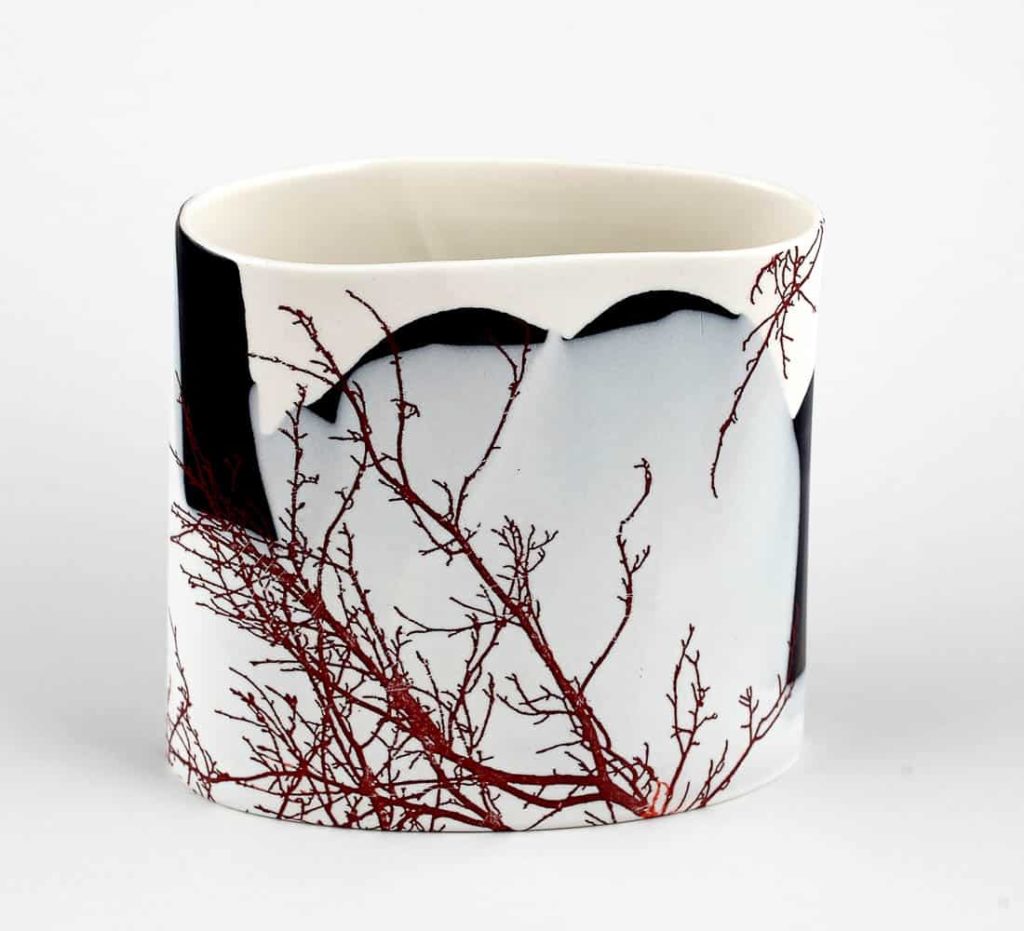
Sandra Black “Jiangxi Spring series-2” (13 x 14.8 x 8.7cm) 2017 cone 6 Seeleys Ebony and Cool ice porcelain Photo by Peter Zuvela
Made in South Fremantle, Western Australia
The work was made in response to travel and residencies in Jingdezhen China during early spring of 2016.Have always loved the bare silhouettes of tree branches before they re-leaf in spring.
Web – www.ceramicartswa.asn.au/sandrablack
Siân Boucherd
- Siân Boucherd, Sky Vase [16x16cm] Jute, hemp, linen, raffia and wool
- Siân Boucherd, Coastal Granite; Vase [18x12cm], Jagged Dish [11x18cm] and Pod [8x11cm] , Jute, hemp, raffia and wool
- Siân Boucherd, Earth Rust Dish [6x30x30cm] Jute, hemp, linen and wool
- Siân Boucherd, Earth Sky Vase [14x11cm], RockPool Plate [26x26cm] and EarthRust Dish [6x30x30cm], 2016, hand dyed jute, hemp, linen, raffia and wool
Made in South-West Australia
Ore Bodies was first conceived as my belly grew with a daughter; my body a vessel, a sort of chrysalis and site of phenomenon. During this time, my weaving process became preoccupied with primitive fertility figures and rock formations of the South West.
Here, “Ore” can also be read as “Awe”, as I seek to capture a sense of wonderment at these ancient geographic formations and the many elements at play; the crystalline growth of mineral salts, the rust of oxidised iron ore, the sun bleaching and the slow but constant abrasion of the oceans’ breath.
Web – sianboucherd.com
Instagram – sianboucherd
Stephanie Radok
Adelaide
- Stephanie Radok, Amaranth and Perilla leaves, 2018, acrylic paint, found cardboard box, 72 x 90 cm, photo: Michal Kluvanek
- Stephanie Radok, Perilla and Amaranth leaves, photo: Michal Kluvanek
The work is about global trade and the emotional energy of food. The box was collected from the Chinese supermarket at Adelaide Central Market.
Web – stephanieradok.wordpress.com
Blandine Halle
- Blandine Hallé, Encounters, 2015, eucalyptus pods, sea polished domestic ceramic chards, linen threads, sterling silver finding. 155 x 130 x 25mm. Photo Blandine Hallé.
- Shipwreck at CY O’Connor beach, South Fremantle, Western Australia. Photo Blandine Hallé.
Made in Fremantle, Western Australia
The juxtaposition of finds from beachcombing and “bushcombing”—of European migrants’ domestic ceramic chards polished by the Indian Ocean and of indigenous eucalyptus tree pods—symbolise the encounters between the early European settlers and the Noongar people.
Web – www.blandinehalle.com
Pennie Jagiello
- Pennie Jagiello, ‘Expended heirlooms, Pilbara remains #27’. 2018, discarded anthropogenic materials collected in the Pilbara WA (2014-15), 62L x 45W x 20D, photo Pennie Jagiello
- Pennie Jagiello, ‘Expended heirlooms, Pilbara remains #27’. 2018, discarded anthropogenic materials collected in the Pilbara WA (2014-15), 62L x 45W x 20D, photo Pennie Jagiello
Made in Pilbara, Western Australia
Fatameh Barg
- Farameh Barg
- Farameh Barg
- Farameh Barg
- Farameh Barg
Bandra Torkaman, Iran
These pieces of work are a combination of needleworks from Bandar Torkaman and menhirs of Yeri (a city in northwest of Iran), both of which are among our ancient precious historic arts. My vision is to regenerate a small piece of the rich history of Iran and display it on contemporary human bodies.
Baharak Omidfar
- Baharak Omidfar, Fairies of the Golmarg (The Death Flower) Valley, 2017
- Baharak Omidfar, Fairies of the Golmarg (The Death Flower) Valley, 2017
- Baharak Omidfar, Fairies of the Golmarg (The Death Flower) Valley, 2017
- Baharak Omidfar, Fairies of the Golmarg (The Death Flower) Valley, 2017
Made in Mashhad, Iran
Fairies of the Golmarg (The Death Flower) Valley
“Golmarg Valley” is the name of a myth. In Sampinge story by Sadeq Hedayat, the myth is repeatedly retold by Padma, Sampinge’s mother, to her. Padma means water lily and Sampinge means a yellow flower with a pleasant odor and scent. Both of them are Sanskrit words.
Golmarg valley is the name of a land replete with beautiful flowers with pleasant scents the inhalation of which is the only source of the sustenance to the astral creatures living there like children free of the hard works, griefs and restlessness of the mortal man. The life of this nation is full of attractions and beauties. Their daily activities encompass expressing love and playing music, reciting poetry and construction of temples with such materials as jade, ruby and topaz.
The reason why the valley has been termed Golmarg is that when the white men arrived at India, they built a factory that produced pleasant fragrance with a deep scent of the flowers’ extracts by means of distillation devices. The scent, dispersed in the air, was not in compliance with the sensitive sense of smell of the Fairies residing in Golmarg Valley and these astral creatures all perished.
Every time that Sampinge hears the story from her mother Padma, she imagines every word in her mind in a magical state that influences her very intensely. During the course of the story, Sampinge makes conclusions based on the events that happen to her and, in the end, she becomes trapped in a cul de sac at which time she finds life intolerable.
At this time, she, incumbent, stares at the deep water in the lake and a Padma flower, an Indian white water lily, draws her attention. Subject to the calm environment and the scents emitted from the flowers and she inhales them, she remembers the miraculous land of Golmarg. Suddenly, due to the unnatural interference of the images of an eternal memory, she sees the curtain pulled away and her soul, that has been softened and rendered astute as a result of isolation, takes a faster pace and sees a life that seems to her as if it is her own and that she had been living with the astral creatures.
She finds herself in an unperceivable rapture and feels a special kind of zeal in herself as a result of which she accepts a special mission in which she can even be faced with death. Water lily is a symbol of enlightenment of the heart that is turned into a pure intellectual quintessence looking like a brilliant ether. She, on a humid and cold morning day, finds Golmarg Valley in the figure of a chaste maiden and settles down in the bosom of the Fairies in Golmarg valley and gets rid of the pains and suffering.
Fairies, as introduced in ancient Iranian stories and narrations, are the womanish and fertile exemplary personalities and this ethereal creature is the very continuation of the Iranian Anahita, the goddess of waters, source of creation, prosperity and water and a symbol of purity and cleanliness. Due to the close relationship between the goddess, Anahita, with the water, the water lily that is always rooted in water is a symbol of Anahita.
For such reasons as the circularity of the flowers, fruits and leaves of water lily, it is considered as well a symbol of perfection. The flower is also closely associated with Mithraism. Iranian myths and stories have a lot in common with the Indian’s, including water lily that is called Padma in India. The other objects with which Anahita is symbolized are pot, pomegranate, pigeon, star, sun, Shah Abasi flower, snake, ram’s horn and moon.
The fairies of Golmarg Valley are displayed as astral creatures in that pleasant and ideal and illusory space, manifested in the face of mythical women along with signs and symbols of Anahita and the other flowers from many kinds, especially water lily. Supported by the appearance descriptions of Anahita as presented in Avesta and according to the enormous use of the jewelries and gems in a beautiful and abundant manner, the fairies of Golmarg Valley have been depicted as art jewelleries.
Fakhriya Al-Yahyai
- Fakhriya Al-Yahyai, You and Me: Omanis, 2017
- Fakhriya Al-Yahyai, You and Me: Omanis, 2017
- Fakhriya Al-Yahyai, You and Me: Omanis, 2017
Made in Muscat, Oman
إنتِ وأنا: عُمانيات
إنتِ وأنا: عُمانيات تجربة فنية تقدم علاقات بصرية لونية في إيقاعات جمالية بين الأنا الخاصة بالفنانة والأنا الاخرى التي تنتمى لهذا المجتمع.
إنتِ وأنا: عُمانيات مشروع فني تربط فيه الفنانة التراث والهوية العُمانية بقالب فني معاصر، من خلال تسجيل لحظات تفاعلية حركية، وبايقاعات متباينة من حيث اللون والموضع.
يستشعر فيها المشاهد الثراء البصري والتناغم الحركي في الأعمال الفنية، وتدخله هذه الايقاعات في أعماق التراث العمانية ورموزه، حتي يكاد المشاهد يشتنشق رائحة الماضي والتي تأخذنا للجذور الأولى لإنتِ وأنا: عُمانيات.
You and Me: Omanis reveals the alter ego of the artist and other self; as a woman expressing her visual creativity in a colourful manner within Omani society. This art project links Omani heritage to Omani identity through photography by using aesthetic rhythms, shapes, forms, textures and colours; which offer a deep and real visual experience.
The textiles I used found in the traditional market in Oman (Matrah). The work shown in different places the first one as it shown in the poster sent earlier in the French Omani Center, later in the Bait al-Baranda Museum in Oman, finally I received an invitation to exhibit the works in Doha (KcentreART center).
Annette Nykiel
- Annette Nykiel, The Pit, 2018, plant and earth dyed mineralogical sample bags aprox 3.5 x 12 m, photo: Louise Gan
- Annette Nykiel, The Pit, 2018, plant and earth dyed mineralogical sample bags aprox 3.5 x 12 m, photo: Louise Gan
The Pit is an assemblage of individually dyed, recycled, mineralogical sample bags that grids the walls in an earth-toned palette; each patterned sample tells a story of the materiality of the place where it was marked.
Web – www.annette-nykiel-artist.com
Britt Mikkelsen

Britt Mikkelsen , Rapids, 2017, Resin, acrylic, timber, concrete 194 x 86 x 51cm photo: Britt Mikkelsen
Perth, Western Australia
Inspired by driftwood found near some river rapids, this piece blurs the lines between manmade and natural materials and questions man’s influence on nature.
Web – www.brittmikkelsen.com.au
Instagram – britt_mikkelsen_art_and_design
Graham Hay

Graham Hay, Rpas, 2015, Ceramic porcelain paper clay, iron-chromium-aluminium and recycled copper wire.56 x 37 x 47 cm, photo: Victor France
Robertson Park Artists Studio, Perth, Western Australia
Copper wire was collected from a scrap yard, 100m from the studio, spun straight before measured and cut into lengths. Ceramic balls made, drilled and fired, with post-firing construction. Work is a creative version of a Social Network Analysis Visualisation of the studio artists and student population over the last 17 years, most of which were born and grew up outside Australia. There are people from Singapore, Burma, Mauritius, the Middle East and S. African nations, who all weekly share a passion for clay. The closer the physical proximity of any ball to another reflects the longer they have known each other through the studio, and so their closeness. Some students have been coming for 17 years. Copper wire was used as it is traditionally associated with (tele) communication.
Web – www.grahamhay.com.au
Instagram – grahamhayart

